My Corner Online
If a Bourbon Whisky Bottle could Talk
I wonder what secrets it would tell
There is a figure of expression,
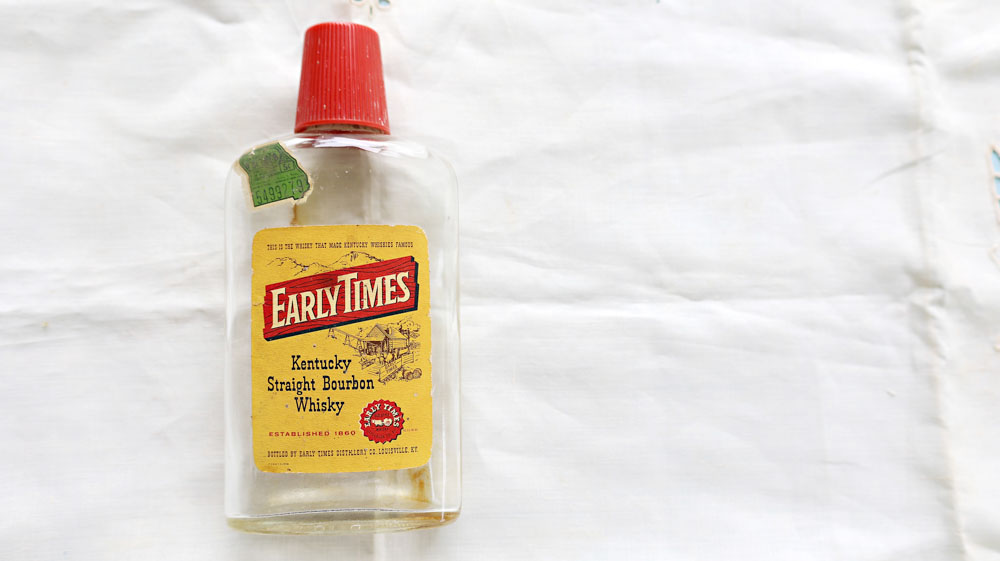
“If these walls could talk, I wonder what secrets could they tell?”
Who knows where it originated or how long ago, but I can say I have heard of it since a young age and it has come to mind every so often in my life when curiosity ponders the stories a space holds. There is another saying about wanting to be a fly on a wall which evokes the same meaning of wanting to know all the details of a confidential encounter.
It sure came to mind with this bourbon bottle we found in the basement. “How long has the bottle been sitting there?” we wondered. We have lived in this house since 1986, for 37 years, so it has been there since before we moved in.
The house was built in 1960. Did the bottle belong to a previous owner? There have only been a few. If we could date the bottle, maybe we could identify which owner.
Or did a construction worker, drinking on the job, set the bottle there in 1960. Did he put it there before the kitchen floor was put in place and forget about it? The bottle was resting against the floor joist, so it would have had to have been placed there after the joists were installed, but possibly before the underlayment. I am imagining in my mind legs and feet dangling over the edge of the concrete wall while a man of rugged appearance munches on a sandwich made especially by his wife earlier that morning, sipping on a bit of bourbon to wash it down, then without thought setting the bottle down, and hopping up to continue his work, never to think of that bottle again.
When we moved into the house, we found a Playboy magazines on a shelf oh-much-too-high in the hallway closet. It is a shelf that is so near the top of the closet ceiling that the space makes it useless. Was it custom made for such a hiding place? Maybe this bourbon bottle was hidden by the same person who hid the Playboy magazines? It seems rather fitting, doesn’t it?
I can imagine a husband heading to the basement for a swig, attempting to hide his liquor habit from his wife who would have no approval of any such behavior. I can imagine the wife coming to the basement door to holler down, “What are you doing down there, dear? Dinner is ready.” The husband would duck under the steps hiding in silence, listening intently for the wife to take that first step onto the stairs, at which time his plan would be to swiftly tuck the bottle into its dark place.
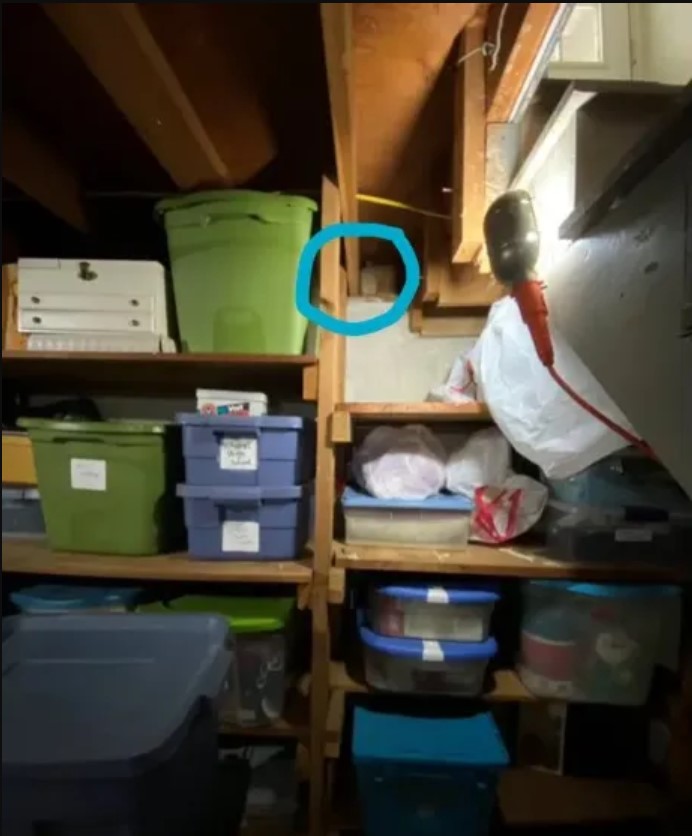
We only found the bottle because we were decluttering the basement by going through a free-standing shelf of tools, paint, and painting implements. Hubby had put a shop light on the steps to illuminate our task better. We were almost done with our project when we spied the bottle. For 37 years it has set there and we have never seen it.
Talk about the perfect dark space for hiding things. How many times have we put things on that shelf right below the bottle and never spotted it?

Well concealed and inconspicuous makes for the winning hide-and-seek game, except from the spiders who build their webs and the dust that finds its way into every crevice.
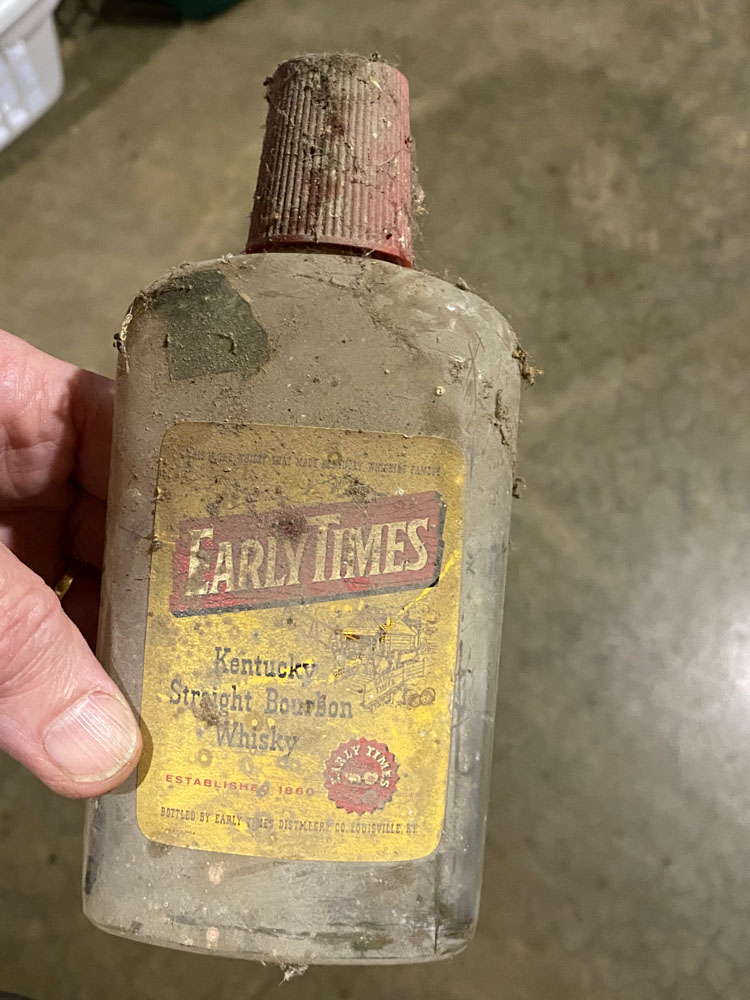
How many years of dust do you think have accumulated on this bottle? Is there anyone out there up for a science analysis on dust to date an object?
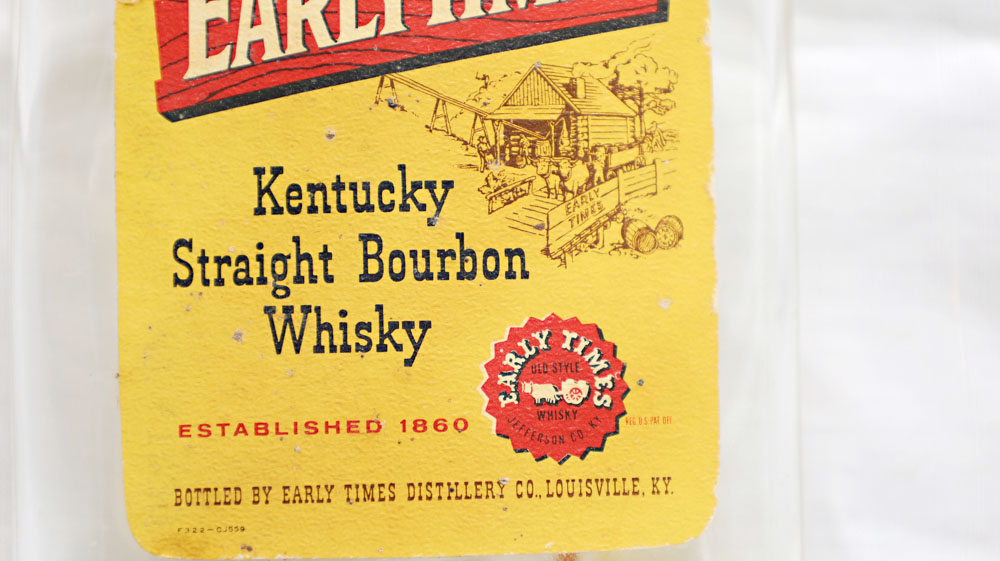
I gave the bottle a quick cleaning and we began to analyze the details to see if we could date the bottle and its prospective owner. The label reads “Kentucky Straight Bourbon Whisky; Early Times Old Style Whisky, Jefferson County, Kentucky; Red U.S. Pat off; established 1860; bottled by Early Times Distillery Co., Louisville, KY; F322-CJ559.
Louisville, Kentucky is a commonly heard of city here in Cape Girardeau, only a bit over a 4 hour drive away.
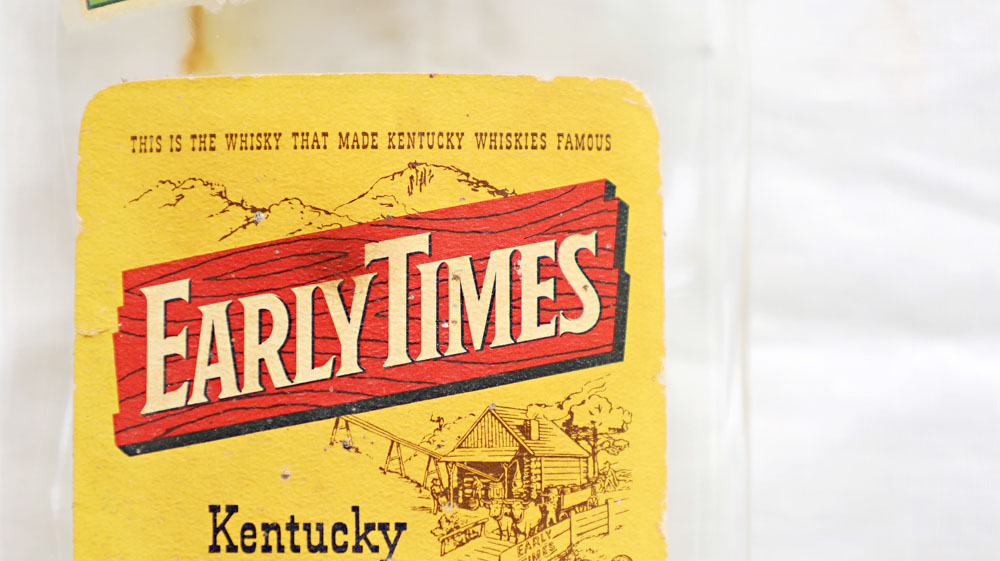
The top of the bottle reads “This is the whisky that made Kentucky Whiskies famous.” Early Times is still in existence, but the labels are much different. I have messaged them on Facebook to see if they respond.
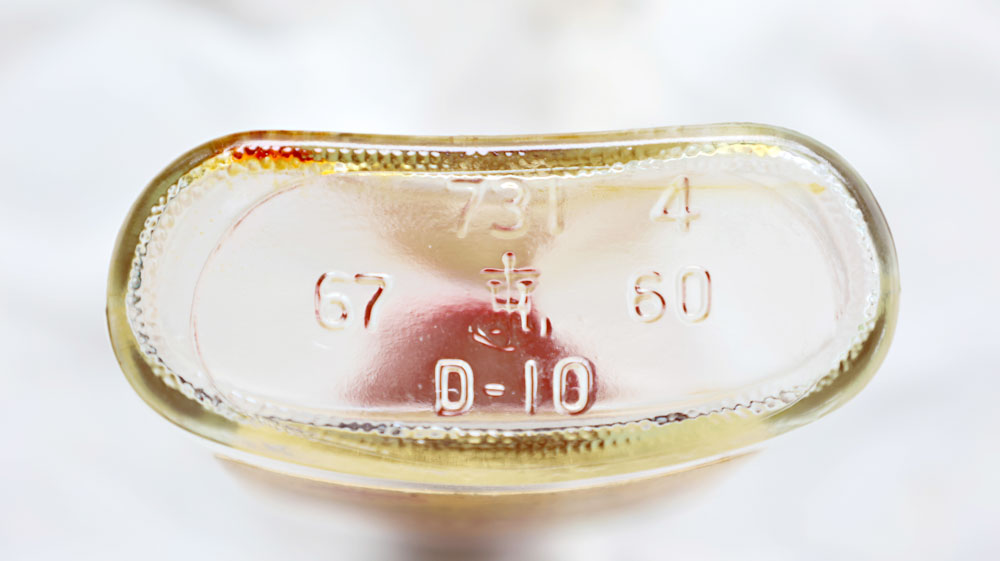
The most telling part of the bottle is the bottom.
At top is 731 4, which is most likely the bottle style number and mold number or mold cavity number.
In the middle is the manufacturer mark for Anchor Hocking, which is an “Anchor and H” trademark.
There is a chance the ‘4’ is the plant number (or factory) which I found to be the San Leandro California Anchor-Hocking Glass Co. 1959-1989, but I believe it is more likely the number of the glass mold.

To the left of the manufacturer mark is ‘67’ which is the Liquor Bottle Permit Number (LBPN). This website lists 67 as a date the permit was issued of 1940, to Anchor Hocking Glass Corporation, Winchester, Indiana. This is why I believe the ‘4’ is not the location of the bottle manufacturer, but rather the 67 is the bottle plant. The bottle would have been made at one location and the bottle would have been filled at a distillery in another location. General Glass used the code ‘67’ while Salem Glass Works used the code ‘13.’ When Anchor Hocking merged with these companies, it inherited these federal identification numbers for liquor ware and continued to use them.
The most telling piece is the number to the right of the manufacturer mark of 1960, which is the year date. The date denotes when bottle was made, not when whiskey was put in the bottle. Therefore the bottle could have been filled in 1960 or several years later.
It puts a fairly solid timeframe of the early 1960’s as the date this bottle was purchased.
This time frame puts the bottle possibly being placed by either a construction worker or the first owner of our home. I actually went to church with the Mrs. who was the first owner and know their daughter, so this puts a bit more depth into the story for me.
I did read, however, that bottle manufacturers continued to use old glass molds because it was costly to create a new mold, but I still think it keeps this bottle in the timeframe of the original owners of our home.
Finally, on the bottom row is a “D-numbers” (Distiller identification code numbers) of “D-10.” From this website the individual found a bottle as: “D-10 Old Forester, Brown Forman, Distillery KY 414, 1952, LBPN 66, 4/5ths quart, No logo present.” Both D-10 bottles have a common location of Louisville, Kentucky.
Some bottles have instead “R-numbers” (Rectifier identification numbers).
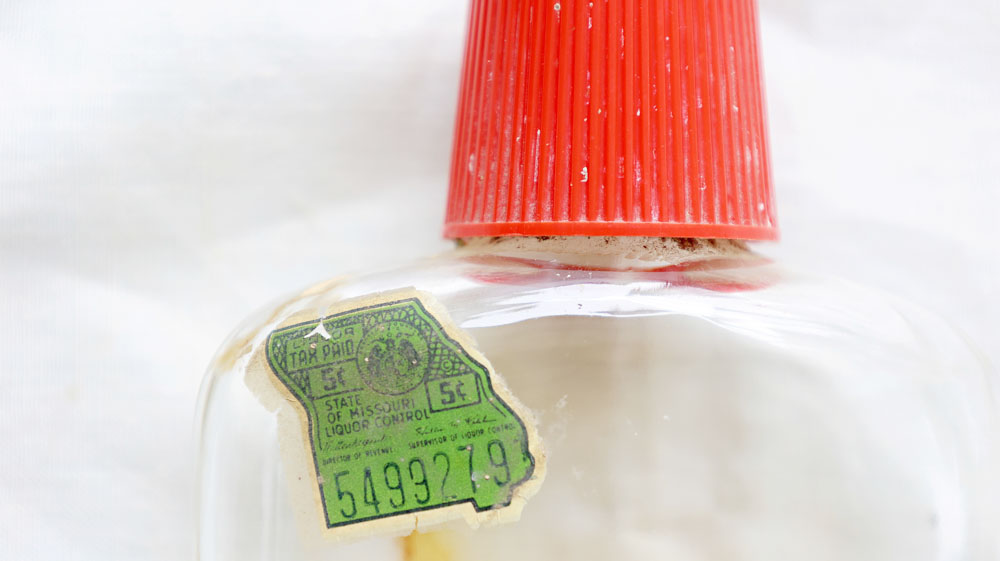
The cap is a plastic screw on type which might help date it because before plastic, metal was used.
There is a green stamp in the shape of the State of Missouri which indicates a liquor tax was paid. It reads “Liquor Tax Paid 5 ₵; State of Missouri Liquor Control; Director of Revenue; Supervisor of Liquor Control; 5499279.”
There are signature names above the Director of Revenue and Supervisor of Liquor Control. This IS THE LITTLE PUZZLE PIECE that brings it all together. Milton Carpenter is the Director of Revenue who served from January 15, 1957 to November 1960 when he was elected the State Treasurer.
The puzzle pieces tell us that
the bottle was manufactured in 1960 at Winchester, Indiana;
it was filled at the distillery in 1960 at Louisville, Kentucky;
and it was sold in 1960 in Cape Girardeau, Missouri!
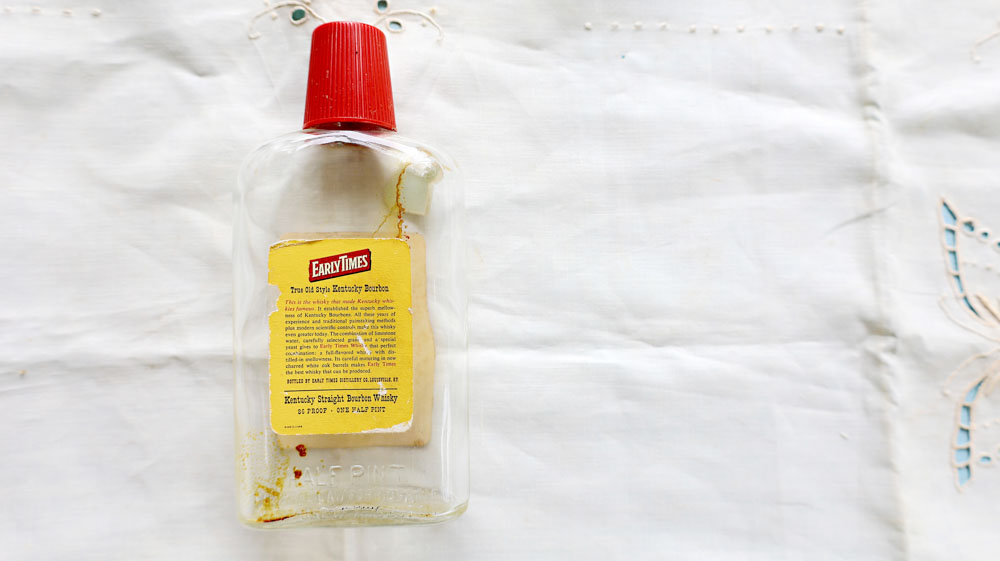
Now we observe the back of the bottle.
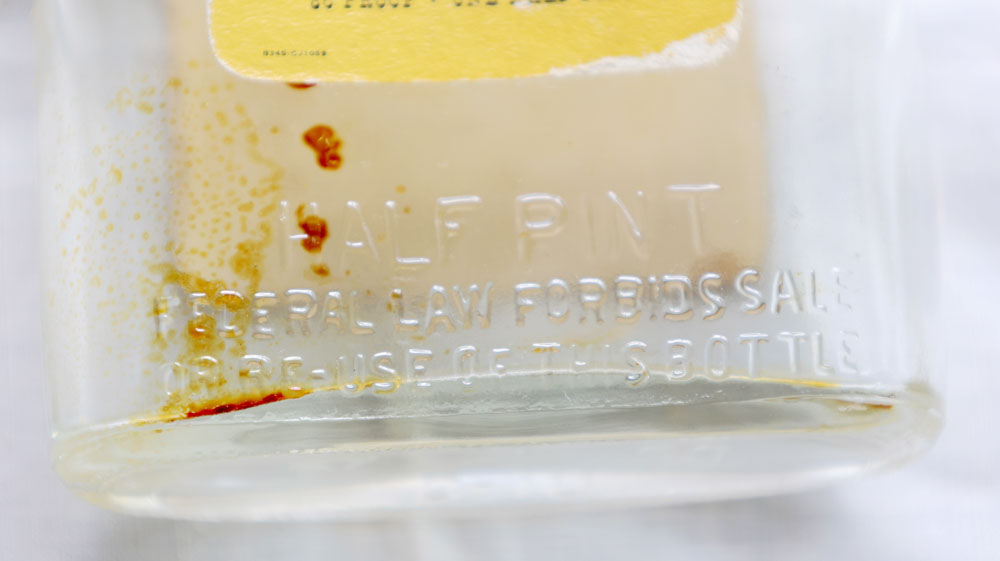
At the bottom it is embossed, “Half Pint; “Federal Law Forbids Sale or Reuse of this Bottle.” Following prohibition, from 1935-1964, this text was required by the government.
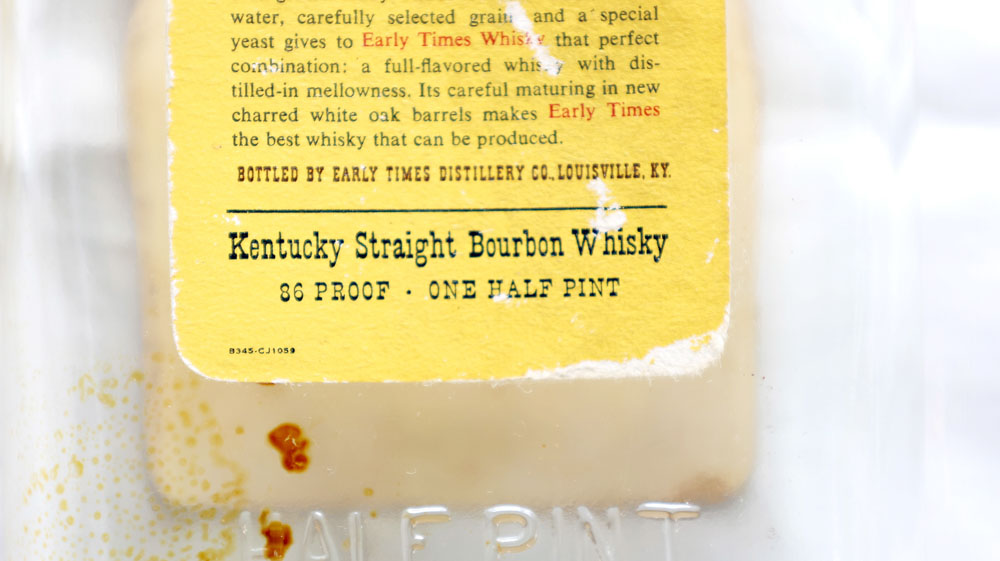
The major note that jumps out at me at the bottom is that it is 86 proof! Take a swig of that!
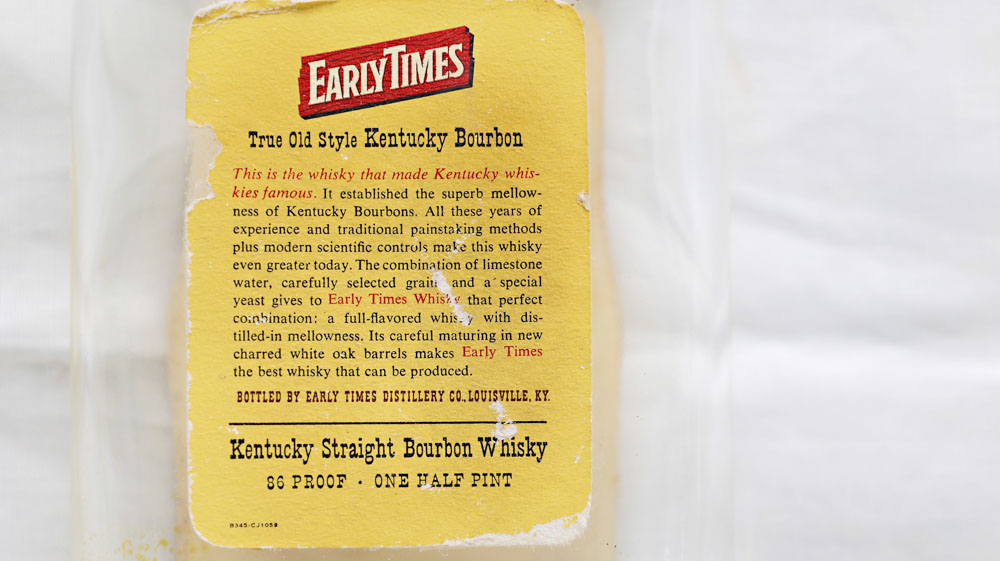
The back reads, “Early Times; True Old Style Kentucky Bourbon; This is the whisky that made Kentucky whiskies famous. It established the superb mellowness of Kentucky Bourbons. All these years of experience and traditional painstaking methods plus modern scientific controls make this whisky even great today. The combination of limestone water, carefully selected grain, and a special yeast gives to Early Times Whisky that perfect combination: a full-flavored whisky with distilled-in mellowness. Its careful maturing in new charred white oak barrels makes Early Times the best whisky that can be produced; Bottled by Early Times Distillery Co., Louisville, KY; Kentucky Straight Bourbon Whisky; 86 Proof, One Half Pint.”
Other date identifying factors include that there is no UPC code which started in the 70’s and starting January 1980 all bottles required metric measurements.
In ending, I have considered options for what to do with this bottle. I could give it to Early Times for their collectibles. I saw somewhere there was a museum for these bourbon bottles and I could gift it to a specific museum or a local museum. I could also attempt to sell it.
I think in odd ways and my mind considers the fact that this bottle has had its home for 63 years in that musty corner of our basement. If it could talk, it sure would have a lot of stories to tell of all those who have traversed before it. Maybe it knows stories of my own sons playing in the basement. Maybe it remembers all the trips for laundry made down the steps. Maybe it can tell of the gathering of Christmas decorations annually. Maybe it can count how many times people have rushed to the basement during the threat of a tornado.
It just does not feel right to rip it from its home. I have an idea to print this writing and insert it into the bottle and put it back from where it came so that maybe in the next 63 years someone else will find the bottle and have its history. Can you imagine finding a bottle with such a note inside?
It would be my gift to the future, of sorts.
Cheryl